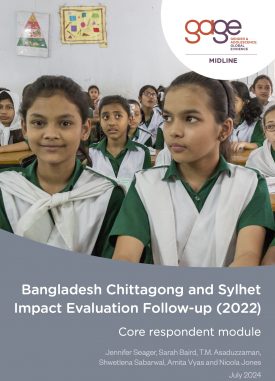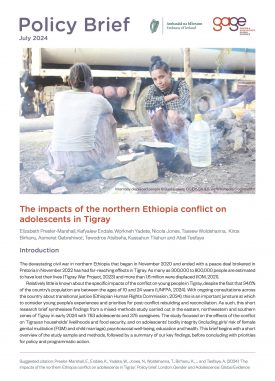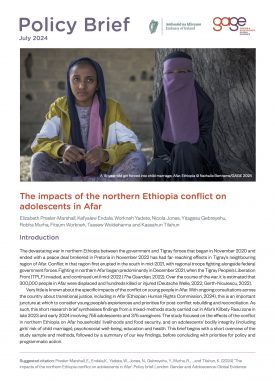From August 2017, the largest wave of Rohingya refugees crossed the Myanmar border into Bangladesh, fleeing crimes that the UN Special Rapporteur has claimed ‘bear the hallmarks of genocide’. Over 880,000 displaced Rohingya now live in 32 makeshift and 2 registered refugee camps in Cox’s Bazar district, one of Bangladesh’s poorest regions, where 1.36 million people – comprising both refugees and host community residents – remain in need of humanitarian assistance.
This brief draws on mixed-methods data collected both before and after the onset of the covid-19 pandemic. Drawing on quantitative and qualitative data from younger (aged 10–14) and older (aged 15–19) cohorts at baseline, our research captures the voices of Rohingya and Bangladeshi adolescents and their views on everyday life, including the structural and socio-cultural constraints they face and whether they are being left behind.
Suggested citation
GAGE consortium (2022) ‘Adolescent lives in Cox’s Bazar: what are we learning from longitudinal evidence? Lessons from longitudinal research with adolescents.’ Policy brief. London: Gender and Adolescence: Global Evidence. (https://www.gage.odi.org/publication/adolescent-lives-in-coxs-bazar-what-are-we-learning-from-longitudinal-evidence/)


